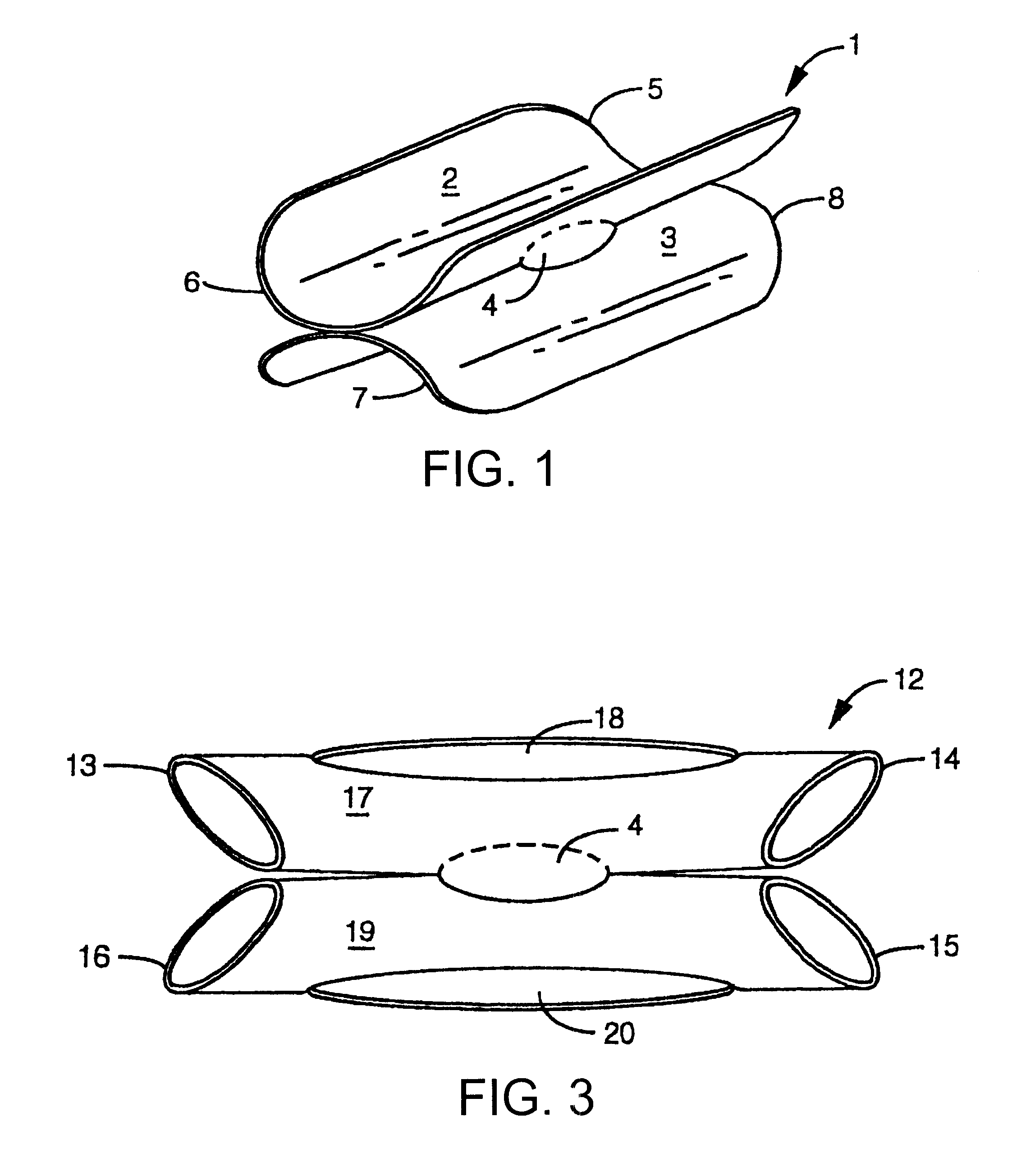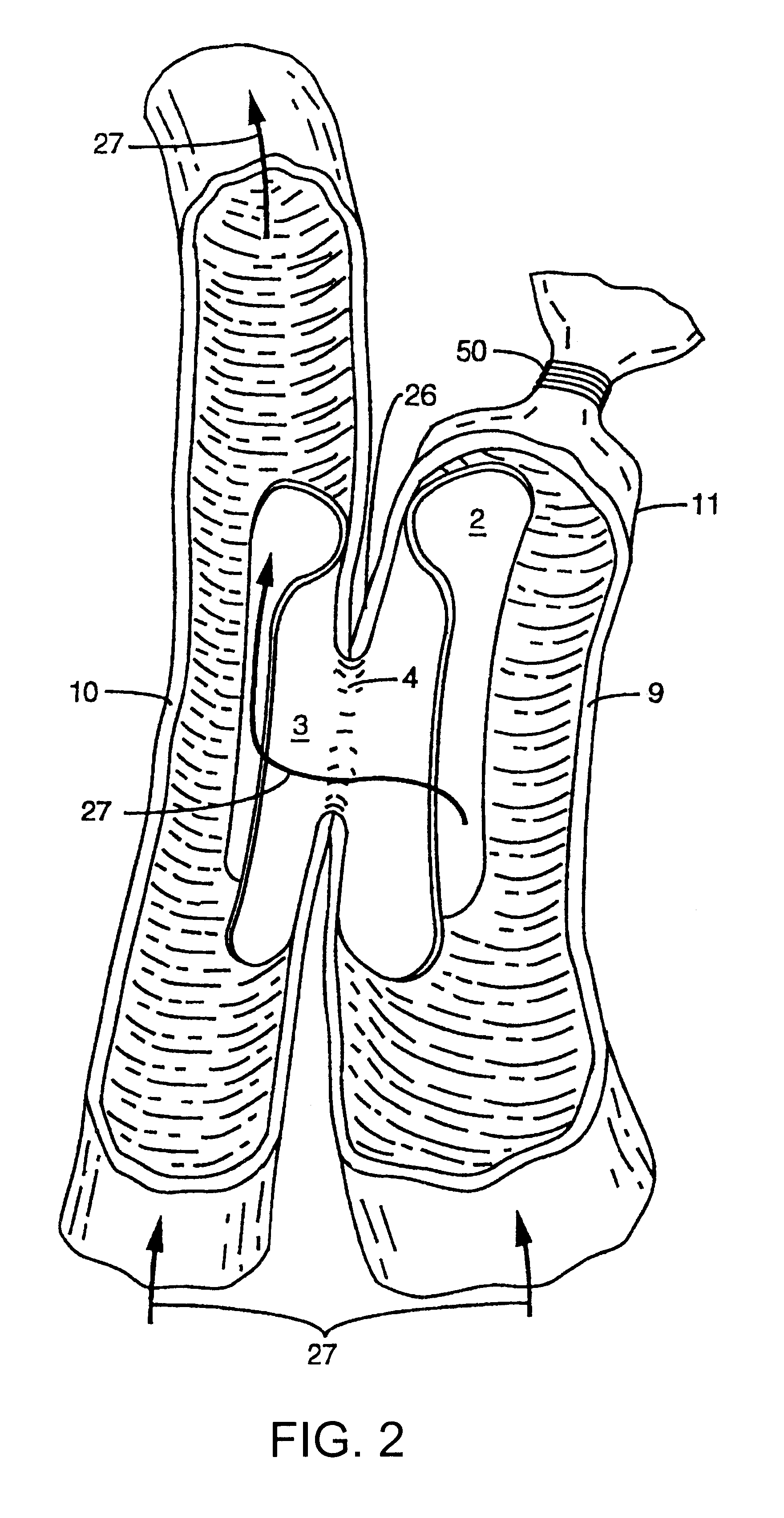Devices and methods for interconnecting vessels
a technology of interconnection and vessels, applied in the field of anastomosis and anastomosis devices, can solve the problems of poor anastomosis patency, damage to the vessel wall, and difficulties and problems that have been presented
- Summary
- Abstract
- Description
- Claims
- Application Information
AI Technical Summary
Problems solved by technology
Method used
Image
Examples
embodiment 12
FIG. 3 shows an alternative embodiment 12 of the invented device having tubular segments 17 and 19. Tubular segment 17 comprises tapered ends 13 and 14 and tubular segment 19 comprises tapered ends 15 and 16. The tapering of these ends may have a low friction coating and be very smooth thereby providing a number of advantages which include making it easier to insert into a vessel. The configuration of FIG. 1 shows that the first segment and second segment are each configured in the form of a portion of a cylinder in an unconstricted state. However, the device could be configured so that each segment is a complete cylinder (see FIG. 3) in an unconstricted or constricted state. An advantage of having each of the segments a partial cylinder is the ability to conform to a wider range of different vessel diameters to improve the fitting range. Another advantage is the maximizing of the amount of endothelial wall of the vessel not covered by the device 12 to minimize any negative biologic...
experimental examples
An experiment was conducted to test the ease of insertion, sealing properties and retention ability of the segments / flanges of the anastomotic devices of the present invention. Various embodiments of the segments / flanges were implanted into a vessel of a swine weighing 39.2 kg. Vessel having diameters of 2, 3 and 4 mm were used as implant vessels due to their similiarity in size to average human coronary arteries. Seven segments were used, all made of a silicone-urethane copolymer (Polymer Technology Group, Pursil 80A) and having a semi-ellipsoidal shape with short and long axis dimensions of 9 by 15 mm. The segments had varying thicknesses ranging from 100 to 380 microns (100.times.10.sup.-3 to 380.times.10.sup.-3 mm). Prior to implant, a suture was secured to the center of each segment to aid in testing the stability and the ability of the segments to keep from dislodging from the arteriotomy. The swine was placed under general anesthesia and, once adequately sedated, a pressure l...
PUM
 Login to View More
Login to View More Abstract
Description
Claims
Application Information
 Login to View More
Login to View More - R&D
- Intellectual Property
- Life Sciences
- Materials
- Tech Scout
- Unparalleled Data Quality
- Higher Quality Content
- 60% Fewer Hallucinations
Browse by: Latest US Patents, China's latest patents, Technical Efficacy Thesaurus, Application Domain, Technology Topic, Popular Technical Reports.
© 2025 PatSnap. All rights reserved.Legal|Privacy policy|Modern Slavery Act Transparency Statement|Sitemap|About US| Contact US: help@patsnap.com



